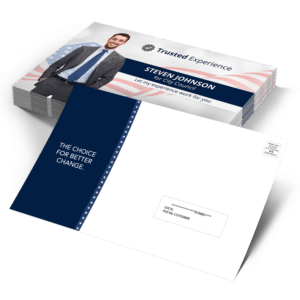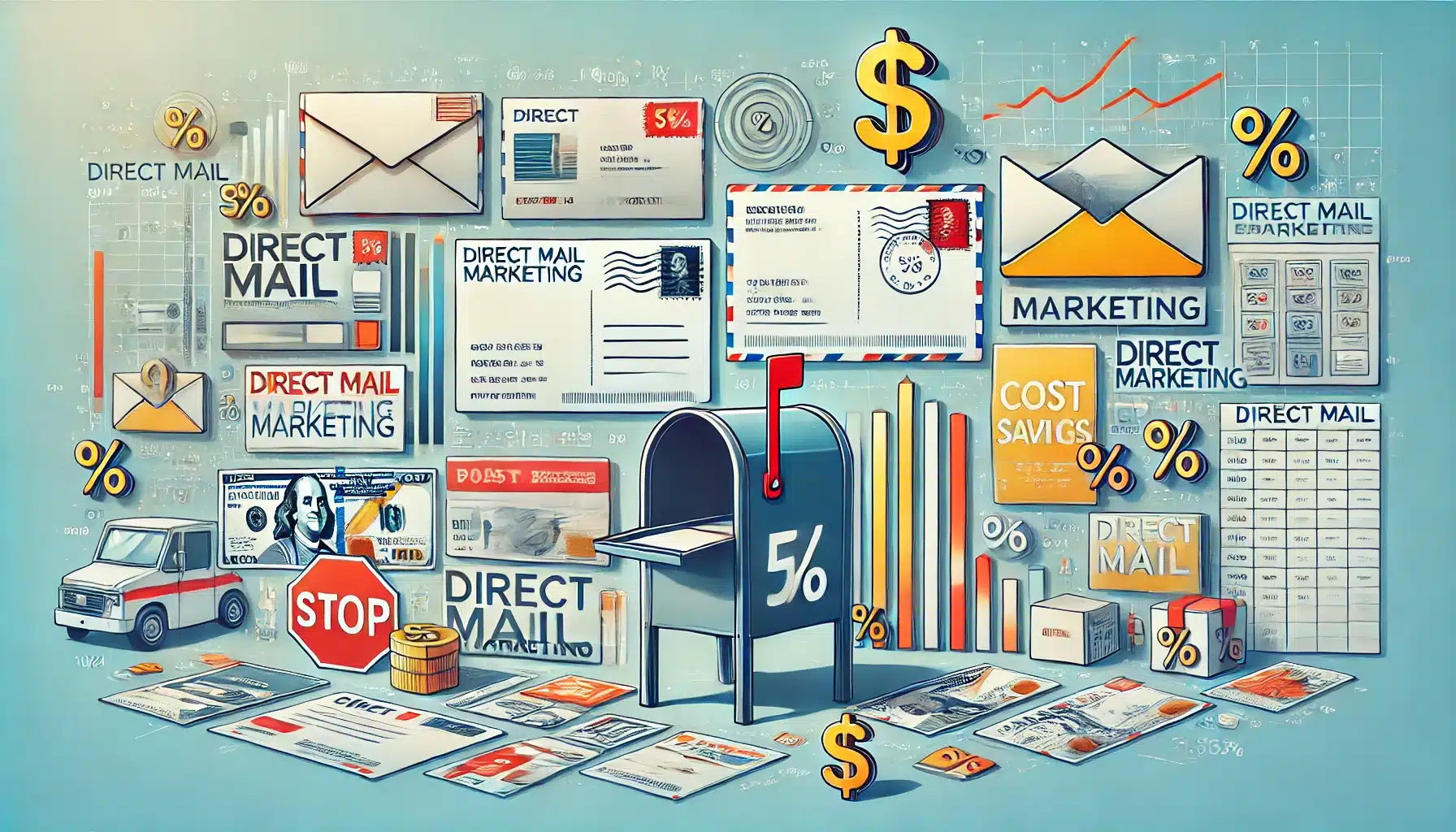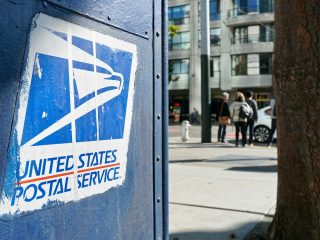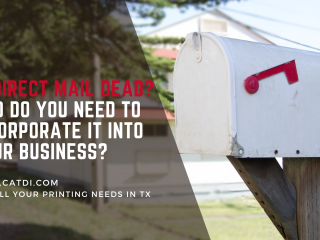Last Updated on July 27, 2024 by Carlos Alonso
Skip Ahead:
- Classes of Mail (July 2024)
- How Postcard Size Affects Postage
- Postcard Mailing Quantities & Their Influence on Postage
- Postcard USPS Postage Common FAQs
Well… here we go again with another postage increase. When it comes to mailing postcards, the postage always goes up! However, to be fair to the USPS, the increase is often minimal. However, it is essential to understand that various factors influence the overall cost. These factors include the class of mail, postcard size and weight, and the quantity being mailed. Let’s dive into the specifics to help you better understand the postage rates for your project, including any rate increase implications and the upcoming adjustments in January 2024, as announced by the USPS.
Classes of Mail (July 2024)
First Class Mail Postage Rates
First Class Mail is known for its speed and reliability but watch for any rate increase. This type of mail is given priority by the USPS, ensuring quick delivery times of 1-5 business days, even as postage rates increase. However, it comes at a higher cost, ranging from $0.40 to $1.16 per piece. A minimum of 500 pieces is required for bulk mailing to qualify for presort pricing, according to the Postal Regulatory Commission. This class of postcard postage is the most expensive.
Pros:
- Fast delivery (1-5 business days) with first-class or priority mail options, despite the USPS Ground Advantage service updates announced by the United States Postal Service.
- Priority handling by USPS
- Forwarding and return services are included, subject to postal service guidelines.
Cons:
- Higher cost compared to other classes
- Requires a minimum of 500 pieces for presort pricing
Standard Mail Postcard Rates (Marketing Mail aka Bulk Mail)
Standard Mail is a cost-effective option for bulk mailing, though it has longer delivery times of 3-21 days, and postage rates increase periodically. It’s ideal for non-time-sensitive mailings, with rates significantly lower than First Class Mail. A minimum of 200 pieces is required; nonprofits can benefit from even lower rates.
Pros:
- Lower cost, especially for bulk mail, which benefits from lower shipping rates announced by the USPS.
- Nonprofit rates available
- Ideal for marketing campaigns, particularly as you navigate the usps rate changes.
Cons:
- Longer delivery time (3-are 21 days)
- No forwarding or return services included
Every Door Direct Mail (EDDM)
EDDM allows you to send postcards to entire postal routes without a mailing list. Delivery times range from 2-15 days, with costs around $0.20 per piece, according to the shipping rates announced by USPS. This is one of the main reasons, amongst many others, why many small businesses choose Every Door Direct Mail, as postage is very low. It’s very popular for service based businesses like dentists and dry cleaners.

Pros:
- No mailing list is needed, but consider using a postage meter for efficiency.
- Low cost per piece
- Broad audience reach
Cons:
- Limited to specific sizes and weights
- Delivery time can vary (2-15 days), similar to standard rate postage.
- No tracking or forwarding capabilities
Presorted vs. Non-Presorted Postcard Mail
Presorted mail involves organizing mail by ZIP codes to receive lower postage rates. Minimum mailing quantities are 500 for First Class Presort Rates and 200 for Standard Presort Rates. Partnering with a mail house can simplify this process and ensure you benefit from the reduced rates, even with the 2024 price increase.

Pros:
- Lower postage rates
- Efficient for large mailings
- Faster delivery than non-presorted mail, although prices will increase soon.
Cons:
- Requires a minimum quantity, which postal service changes might impact.
- It needs proper sorting by ZIP codes
Commingled Postcard Marketing
Commingling postcards combine your mail with other companies’ mailings to achieve bulk rates without meeting the minimum quantity requirements. This service offers delivery times of 2-15 days and costs similar to Standard Presort Mail, with no minimum quantity needed.
Pros:
- Given the current shipping rates, bulk rates without minimum quantity can be advantageous.
- Cost-effective for small mailings
- Decent delivery times (2-15 days)
Cons:
- Reliant on third-party services
- Delivery times can vary
Postcard Sizes
Postcard sizes affect the class of mail you can choose and the postage rates, which may see a rate increase. Here are some standard sizes and their impact on postage costs:
Standard Sizes
- 4 “x6” and 4.25 “x6”: These sizes qualify for the lowest First Class Mail postcard rates, which might be affected when the United States Postal Service changes stamp prices. They are ideal for short, impactful messages and are economical for large mailings, especially when using a postage meter.
- 5 “x7”: Slightly more significant, these can still be mailed at a reasonable rate but may incur higher costs than the most petite standard sizes.
Oversized Postcards
- 5.5 “x8.5”: Larger postcards like this have a higher visual impact and can convey more information. They often require higher postage rates.
- 6.5 “x9” and 6 “x11”These sizes are eligible for EDDM and provide ample space for graphics and text, ensuring you can fully implement your marketing strategy. However, they cost more per piece in terms of postage, especially with the upcoming postage rates increase.
Impact on Postage Costs: Expect potential price increases and adjustments in January 2024.
- Small Postcards (4 “x6” ): These qualify for the lowest First Class Mail rates, making them a cost-effective option for large-scale campaigns.
- Medium to Large Postcards (5 “x7” and larger): These require more postage due to their size and weight but can be more effective for detailed marketing messages.
Postcard Mailing Quantities
Quantities influence postage costs, with higher quantities generally reducing per-piece rates. Here’s how different quantities affect pricing:
Small Quantities (Below 200)
- It is ideal for targeted mailings but not eligible for bulk discounts, unlike some other methods recognized by the Postal Regulatory Commission.
- Higher per-piece costs due to non-presorted rates might increase further in January 2024.
Medium Quantities (200-500)
- Qualify for Standard Mail rates.
- Eligible for bulk discounts, reducing per-piece costs and offsetting any potential rate increase, including the cent adjustments in January 2024.
Large Quantities (500 and above)
- Benefit from the lowest rates due to presorted and commingled options, even as USPS rate changes take effect.
- Significant cost savings on a per-piece basis, making them ideal for extensive marketing campaigns, even with us postal service rate changes.
Postcard Postage FAQ
How Many Stamps Do I Need for My Postcard?
For standard and oversized postcards sent domestically, typically one stamp is sufficient. Larger postcards may require a second stamp.
Is a Stamp Necessary for My Postcard?
In high-volume mailings, using permit imprint indicia instead of stamps can be much more cost-effective and simplify the process, which the United States Postal Service often recommends.
Do Postcards Need Envelopes?
Postcards do not require envelopes, which ensures immediate visibility and typically lower costs compared to other options like postage stamps.
What Are the Postcard Design Requirements?
Ensure a blank space of 4″x2.25″ on the back, usually in the bottom right corner, for mailing information.
Is a Return Address Needed on a Postcard?
A return address is optional unless you want undeliverable postcards returned to you, typically used for first-class mail.
Which Postcard Size Should I Choose?
Choose a size based on your message and budget. Smaller postcards are cost-effective, while larger ones make a bigger impact.
Why Does the USPS Keep Increasing Postage Rates?
USPS increases postage rates to keep up with inflation, rising operational costs, and declining mail volumes. These adjustments help maintain financial stability and ensure continued service quality.
How Often Does the USPS Raise Postage Rates?
The USPS typically reviews postage rates annually and may implement increases to cover operational expenses and inflation. Staying updated with USPS announcements can help you plan your mailing budget as postage stamp prices fluctuate.
How Can I Save on Postage Costs Despite Rate Increases?
To mitigate the impact of rate increases, consider bulk mailing options, presorted mail, or using services like Every Door Direct Mail (EDDM) that offer discounted rates for larger quantities.
Ready to Get Started on Your Postcard Project?
Catdi Printing offers comprehensive commercial printing and direct mailing services, ensuring your postcards reach their destination efficiently and cost-effectively. For more information or to start your postcard mailing, visit our product page. Our direct mail experts can assist you with any questions or guidance, especially about the upcoming postage price changes, including how prices will increase.












